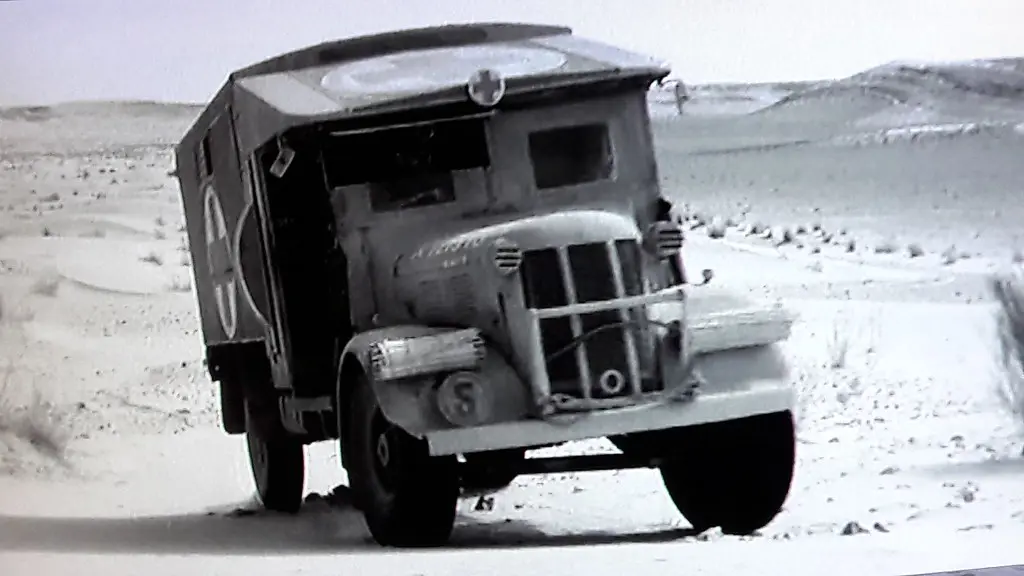THE MAN WHO DROVE KATY – ON LOCATION WITH ICE COLD IN ALEX
23 May 2023
You are a young National Serviceman named James Wilfred Lowther, posted to Libya on detachment and assigned to the Royal Army Medical Corps. Then one day, a film company approaches the camp, asking for volunteers. The result – cinematic immortality.
As most readers know, the plot of Ice Cold in Alex concerns John Mills’s Captain Anson, a Royal Army Service Corps officer. Accompanied by Sergeant-Major, he transports two nurses, Sister Diana Murdoch and Sister Denise Norton, from Tobruk to Alexandria in Egypt in 1942. En route, they encounter Captain Van der Poel, a South African with a rather Germanic accent. And their vehicle is an Austin K2/Y ambulance nicknamed Katy.
The K2/Y dates from 1939 when the government issued its requirements for an ambulance to serve all branches of the armed forces around the world and work with local authorities at home. The Austin chassis, based on the civilian K30 lorry, seemed ideal, and Mann Egerton worked with the Royal Army Medical Corps when developing the coachwork. The body could accommodate 10 ‘sitting casualties’ or four stretcher cases on double-decked bunks mounted on either side. The upper tiers could be lowered to form seats, and the body was mounted on steel bolted to an ash frame.

Power for the K2/Y was from a robust 3,462cc litre straight six petrol engine, capable of propelling three tons of ambulance at 50 mph on a tarmac road. Some 13,102 examples departed Longbridge between 1939 and 1945, serving with the forces of Britain and the Commonwealth. The then Princess Elizabeth drove the ambulance during her war service with the ATS. During one campaign, the driver managed to transport twenty-seven wounded personnel carrying them on the ambulance’s wings, rear step, and bonnet and suspending additional stretchers in the rear using rifles as supports.
To quote Martyn Nutland’s fascinating Brick by Brick: The Biography of the Man Who Really Made the Mini:
“There were many innovative features, including a lead or galvanised steel water tank and an on-board compressor to inflate the tyres, although the latter were of bullet proof design. Katies were powerful, fast, manoeuvrable and easy to drive with an excellent ride that often saw them reserved for the most serious cases.”
The K2/Y continued to serve with the British military long after WW2, and the police force of Guernsey employed an ex-military Austin as a mobile command post until as recently as 1975. It was also the principal character in a novel by Christopher Landon, a former RAMC Major, who entitled his work Ice Cold in Alex. Shooting of the ABPC film adaptation began in Libya on the 12th of September 1957.
Tripoli doubled for Alexandria as it was almost impossible for a British company to film in there in the aftermath of the 1956 Suez Crisis. Two primary ambulances appeared on screen – a special 4x4 model based on a Canadian Military Pattern chassis and a standard model. As Mr. Lowther’s son Mark explains, the latter was:
“His Army Ambulance! The film company gave him twice his weekly pay and he totally loved a little bit of fame. He drove the K2/Y on screen - he was the stuntman when the ambulance was being fired at. He said they were all great - really down to earth. They had dinner most evenings with the cast and crew.”
After the end of his National Service Mr. Lowther remained with the army for another eight years, before serving for 23 years in the RAF. As Mark says, “ then 5 years in Saudi Arabia working on the Lightnings!”
So, when you see the film on Talking Pictures Television, raise an ice-cold glass to the young soldier who became a part of British cinema history.
With Thanks To: Mark Lowther
